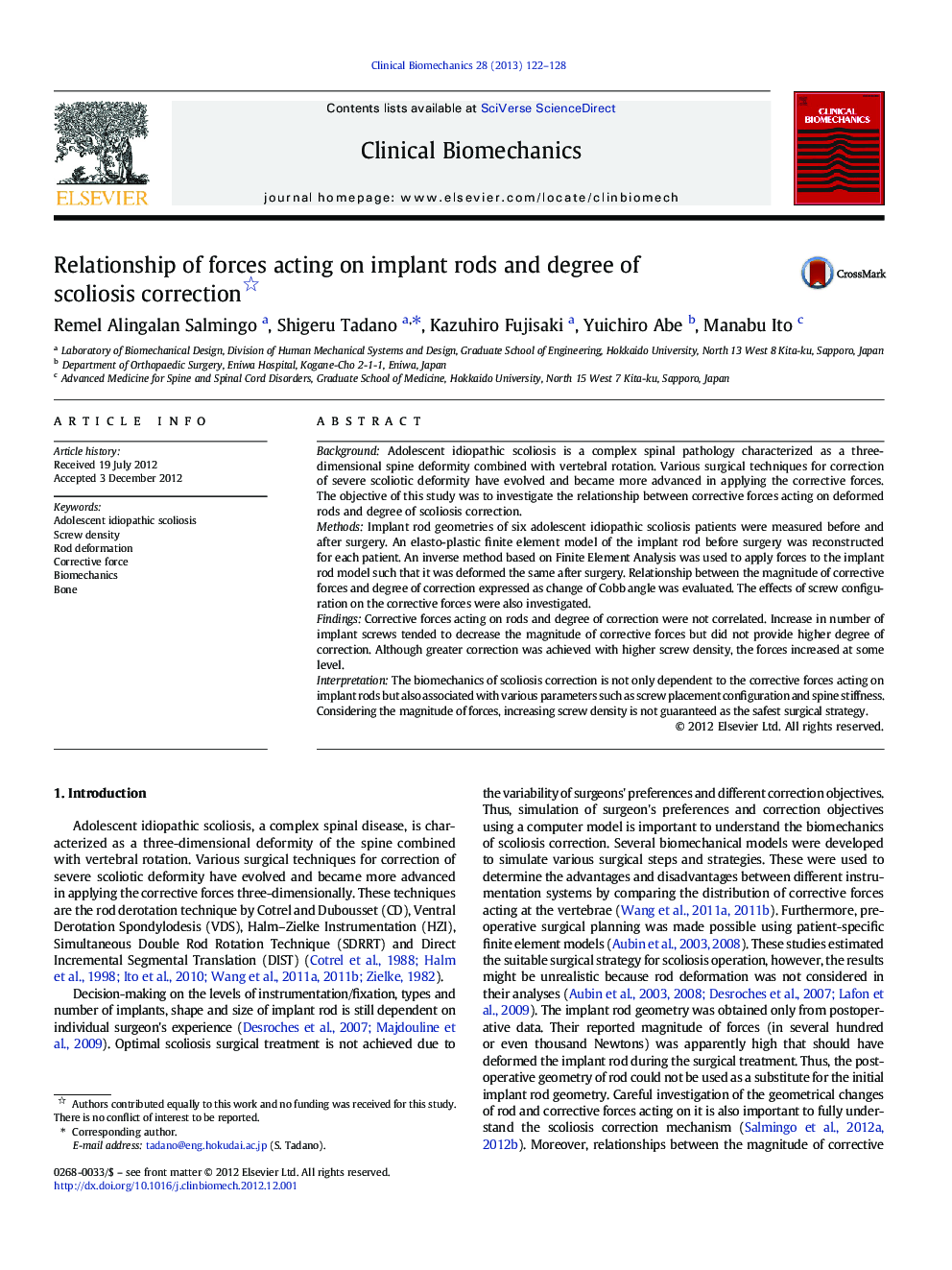| Article ID | Journal | Published Year | Pages | File Type |
|---|---|---|---|---|
| 6205043 | Clinical Biomechanics | 2013 | 7 Pages |
BackgroundAdolescent idiopathic scoliosis is a complex spinal pathology characterized as a three-dimensional spine deformity combined with vertebral rotation. Various surgical techniques for correction of severe scoliotic deformity have evolved and became more advanced in applying the corrective forces. The objective of this study was to investigate the relationship between corrective forces acting on deformed rods and degree of scoliosis correction.MethodsImplant rod geometries of six adolescent idiopathic scoliosis patients were measured before and after surgery. An elasto-plastic finite element model of the implant rod before surgery was reconstructed for each patient. An inverse method based on Finite Element Analysis was used to apply forces to the implant rod model such that it was deformed the same after surgery. Relationship between the magnitude of corrective forces and degree of correction expressed as change of Cobb angle was evaluated. The effects of screw configuration on the corrective forces were also investigated.FindingsCorrective forces acting on rods and degree of correction were not correlated. Increase in number of implant screws tended to decrease the magnitude of corrective forces but did not provide higher degree of correction. Although greater correction was achieved with higher screw density, the forces increased at some level.InterpretationThe biomechanics of scoliosis correction is not only dependent to the corrective forces acting on implant rods but also associated with various parameters such as screw placement configuration and spine stiffness. Considering the magnitude of forces, increasing screw density is not guaranteed as the safest surgical strategy.
